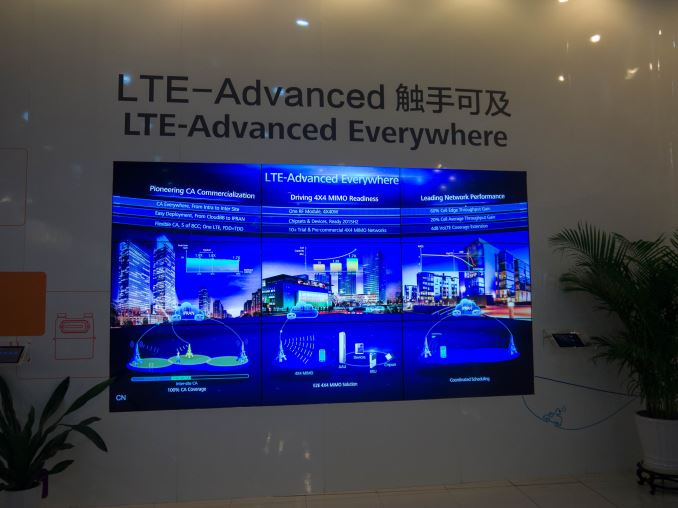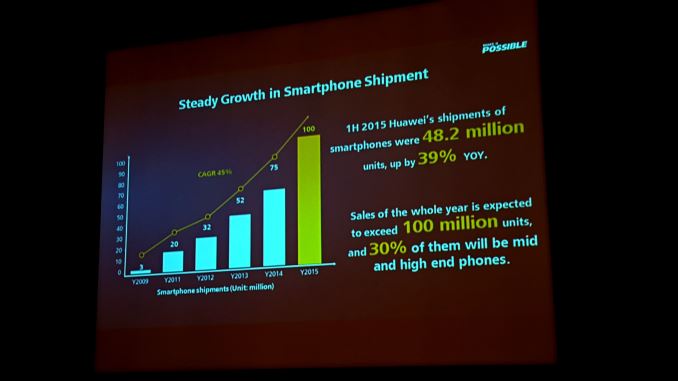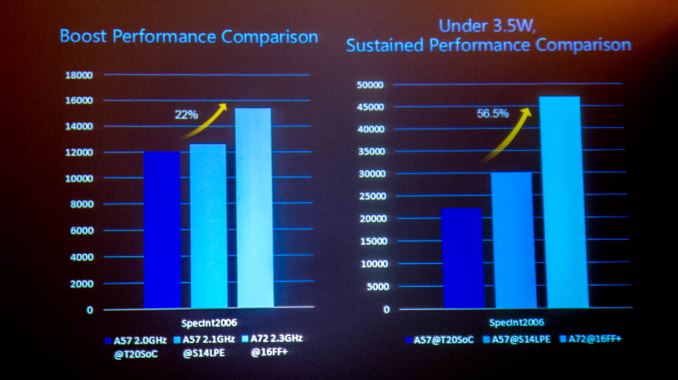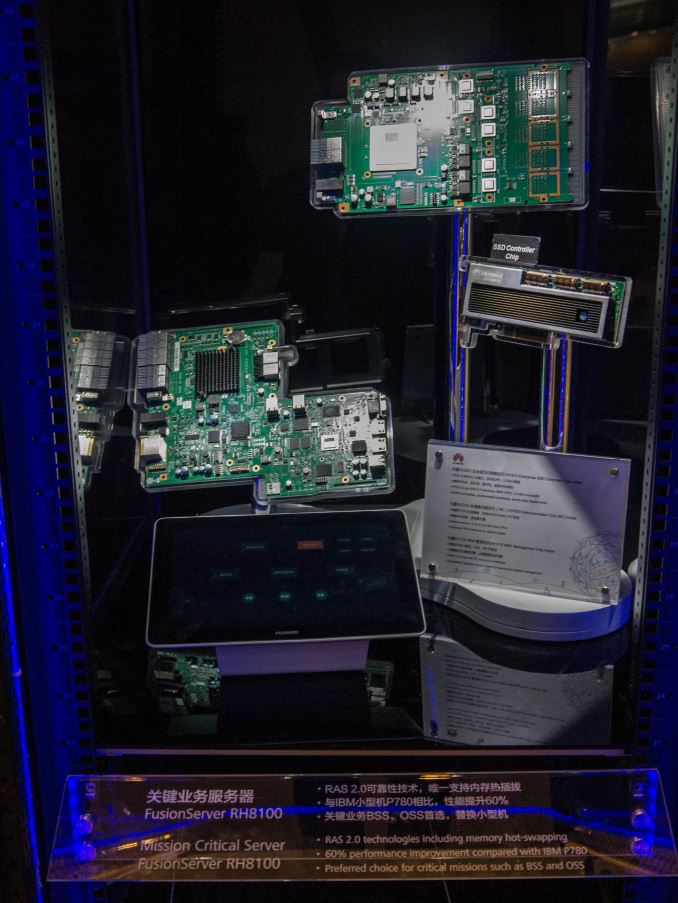China Calling: Huawei’s Media Tour, Kirin 950 and Why We Went
by Ian Cutress on December 4, 2015 8:00 AM ESTFinal Thoughts
All truth be told, when an electronics manufacturer opens up we stand to gain a great deal of insight into how they think and how strategies formulate. Sure, it’s a question of speaking directly to the people that actually make the decisions, otherwise questions and answers never go through the chain. But also as an editor, from my perspective, it is important to understand when you are presented with a standard PR answer and ask the right questions sufficiently in order to get to the heart of what makes a company tick. There will always be things that a company will never tell you, either due to liability or the level of trust they have with you, or there might be some discussions that remain strictly behind closed doors.
As we tell every company we meet, those closed room discussions, despite not directly producing content for us as technical media or analysts, are just as valuable as on-record meetings and can actually be really helpful in understanding perspective or technical details. Even if we do not write about what is said, it enables another layer of conscious or sub-conscious consideration and analysis about the industry for when we write about other topics, helping us translate what we see into the wider picture. Understanding why from a bottom-up perspective is just as important as the top-down, even more-so when looking at trends and directions and being able to educate users and engineers alike.
In that regard, this trip has established a new level of dialogue between Huawei and AnandTech in order for both sides to understand each other more, from our understanding of the markets and devices to their diverse silicon and product portfolio. That rapport and direct line of communication to those who turn the cogs which we did not have before is important, with respect to handsets, silicon, and wider corporate strategy. It is clear that Huawei wants to expand into more markets beyond their standard Chinese base, and has dipped its toe into leading the market with TSMC’s 16nm FinFET+ node in the Kirin 950. The phrase ‘premium brand’ was a common theme throughout our trip, and the numbers back that up. Moving from 3 million handsets in 2009 to 48.6 million in the first six months of 2015 alone means that the investors are all happy, especially given that 30% of those are high-to-mid level devices at a cost of €400 and up. Being partially vertically integrated through its HiSilicon subsidiary allows it to reduce cost, spend on R&D and provide a custom product as long as it is well executed. While this is going on, Huawei’s two other business groups on services and infrastructure account for the other 60% of the company, which are also both benefiting from the HiSilicon synergy.
Huawei does still have several mountains to climb however, this much is obvious. When speaking purely about the handset business, when striving for that premium brand status, its presence in North America is still a way behind the two major players. This stems from several factors including a CDMA licensing and certification issue preventing Kirin chipsets in North American models, but also an issue regarding the perception of some users that will not want to hand over money for a device made by a Chinese-based data company, especially if they cannot pronounce the name. Arguably the first of those issues is easier to crack about CDMA, such that one solution to Kirin might be to produce a die without an integrated modem, similar to Apple, but both of the issues above will have severe implications on Huawei’s ability to expand in the US. The Huawei watch too, as a dip into the wearable space, comes with many variables on style, size, applicability, usefulness, ecosystem, and others – sometimes a single model can be deceptive when users have more unique tastes and perhaps want something more/less than a classic watch design.
For the rest of the world where CDMA isn’t a factor, the latest Kirin 950 chipset needs to be a proven entity and tackle the big players in Apple’s A9, Qualcomm’s upcoming Snapdragon 820, Samsung’s Exynos 8890 as well as other upcoming custom designs. Samsung is the only member in that list with their own fabs, meaning the others will have to pay top dollar for a lead in semiconductor manufacturing. Beyond that the quality of the designs for performance, power efficiency, custom IP blocks and software integration will also be up against back-end production of the silicon itself. It comes across as a fairly daunting task for one of these manufacturers to get all the pieces in place for a new flagship handset every year that builds on the last. In order to be successful they have to execute well in every area every year, to which we’ve already seen some failures and successes.
Both Andrei and I were quietly surprised with the Kirin 950 announcement, and felt positive for the 950 as it offers some interesting innovations (first smartphone A72 cores, first hybrid memory controller, new custom image signal processor, low power i5 sensor hub with compute capabilities in an ARM Cortex M7). It will be interesting to see how much we can decipher about the new chip compared to the old, especially when we have new cores (A53/A57 to A72), a new process node (28nm to 16FF+) , new custom IP and so on. When we get a device into test, teardown and produce numbers, they will tell the story. But as is obvious from our trip that smartphones are just the tip of the iceberg for Huawei.














109 Comments
View All Comments
s.yu - Tuesday, December 8, 2015 - link
No. Apple does use the newest, most advanced technology. Huawei doesn't upgrade unless it has to, and focuses on making old tech look like new to the consumer.Apple's started using NVMe, Huawei's still on eMMC. Look at that insane A9X(Yes I know it's tablet only), look at that puny Kirin950. Huawei's got the head start, of a month or two, but the Kirin will turn out the weakest of the next generation's flagship SoCs.
Huawei only implemented Force Touch after Apple used it in the Watch(and they still haven't shipped it), but they've gotten the domestic ultra-nationalist fanboys to believe that Huawei came up with it first. Despicable.
mayankleoboy1 - Monday, December 7, 2015 - link
Since only samsung has their own fabs, here is a suggestion:Huawei buy all the fab capacity of TSMC using its own funds and that of the Chinese Government ? Apple will go to Samsung, which they are loathe to do. And Intel wont fab anything for
Apple. So effectively, Apple will be able to produce only 10%-50% of their phones.
Goyim - Monday, December 7, 2015 - link
Proper Pronunciation.https://www.youtube.com/watch?v=KGAqvpYLiGw
garbagedisposal - Wednesday, December 9, 2015 - link
Pronunciation in that video is wrong, see s.yu's comment aboveEthos Evoss - Friday, December 11, 2015 - link
Don't understand anandatech in final words why u bringing usa into case?!?And problems with certifications or licences in USA..
Anandatech are you so naive or you just pretending to be stupid?
What you think why chinese companies has problems in USA?
Because it is on purpose and because USA is scared chinas business like devil hy water..
Anamdatech do you even know how politics works in ANY sphere of busines or facilities or governments?
Everything is just on purpose to protect own busines.. (country)
If would be allowed so easily hinese brands into USA, USA busines woud be DEVOURED by flipping fingers..
And am telling you without China USA electronic brands wouldn't exist. as it is now..
And in first you have to take in accout it isn't about brands which is better or which is on higher level because they are all on the same level MAIN reason is ADVERTISE and POPULARITY
USA (bcos acoodring you it is don't know why main country of interest) will BAN prohibite any advertising of chinese brands in its country THAT is the main reason.. Bcos is scared
Like you said you have bunch of kiddos readers which blabling about apple how it is best just bcos advertise allowed across the globe. BUT most of these poor peope doesn't own it..
Ppl complainig about 4G not working in USA.. why it is perfectly working in rest of the world? BECAUSE USA om purpose won't allow them certification use their bands..
And you just decide to strike in Huawei they are like ; WTF is this.. they has no idea and you e pecting they gonna tell you everything.. And you wondering why so many secrets..
I tell you what, do same tour into Apple and demand all secrets wht they got I am really curious wht they would tell you
PEACE!